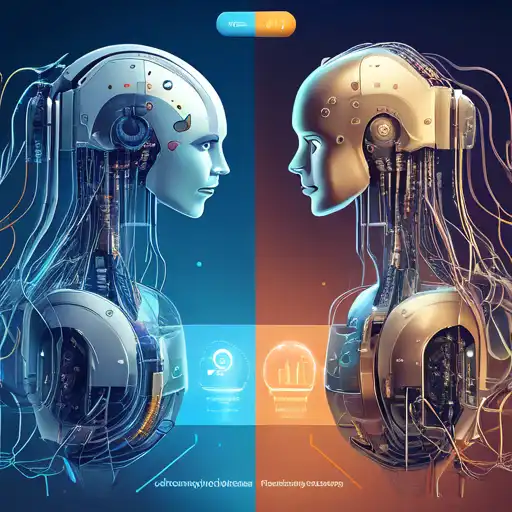Introduction to Machine Learning and Deep Learning
In the realm of artificial intelligence (AI), Machine Learning (ML) and Deep Learning (DL) are two pivotal technologies that have revolutionized how machines interpret data. While they share commonalities, their differences are significant and understanding these can help in selecting the right approach for your AI projects.
What is Machine Learning?
Machine Learning is a subset of AI that enables systems to learn and improve from experience without being explicitly programmed. It focuses on the development of algorithms that can process data, learn from it, and then make a determination or prediction about something in the world.
Key Features of Machine Learning
- Requires structured data
- Works well with smaller datasets
- Less computational power needed
- Easier to interpret and explain
What is Deep Learning?
Deep Learning, a subset of Machine Learning, mimics the workings of the human brain in processing data for use in detecting objects, recognizing speech, translating languages, and making decisions. DL algorithms are inspired by the structure and function of the brain called artificial neural networks.
Key Features of Deep Learning
- Can work with unstructured data
- Requires large amounts of data
- Needs significant computational power
- Harder to interpret due to its complexity
Machine Learning vs. Deep Learning: The Key Differences
While both ML and DL aim to teach machines to learn from data, the depth of learning and the methods used differ significantly. Below are the core differences between these two technologies.
Data Dependency
Deep Learning requires large amounts of data to perform well, whereas Machine Learning can deliver good performance even with smaller datasets.
Computational Power
Deep Learning models are computationally intensive to train, often requiring GPUs or TPUs, unlike most Machine Learning models that can run on CPUs.
Feature Engineering
In Machine Learning, feature extraction is done manually by a data scientist, but in Deep Learning, the model tries to learn these features automatically from the data.
Interpretability
Machine Learning models are generally easier to interpret and explain than Deep Learning models, which are often considered black boxes due to their complexity.
Choosing Between Machine Learning and Deep Learning
The choice between ML and DL depends on several factors including the size of your dataset, the computational resources available, and the complexity of the problem. For simpler problems with limited data, Machine Learning might be the better choice. However, for complex problems like image and speech recognition, Deep Learning could offer superior performance.
Conclusion
Understanding the differences between Machine Learning and Deep Learning is crucial for anyone looking to delve into the field of AI. While both have their place in the technology landscape, their applications, requirements, and outcomes differ markedly. By considering the specific needs of your project, you can choose the most appropriate approach to achieve your goals.
